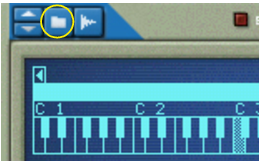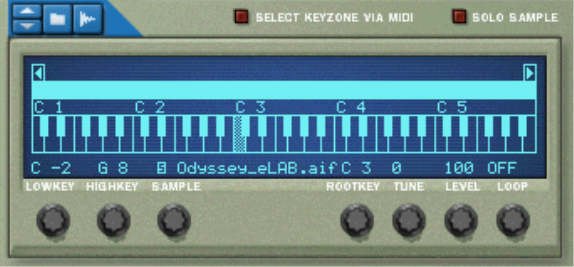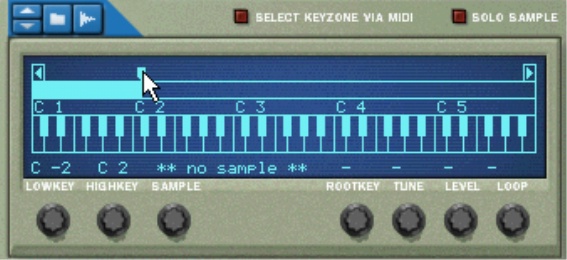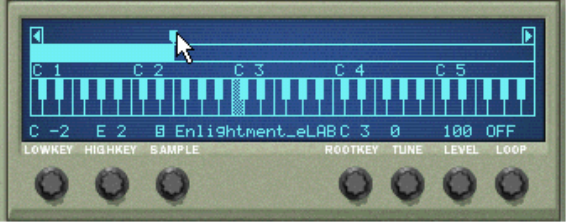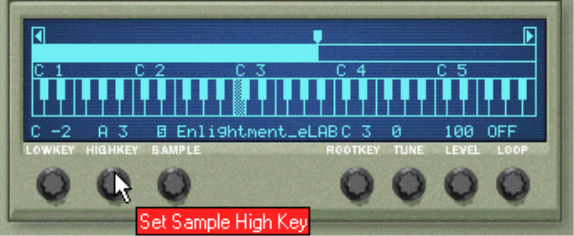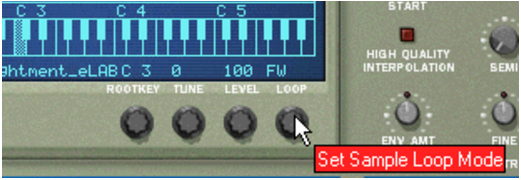The samples in a SoundFont are stored hierarchically in different categories: User Samples, Instruments, Presets etc. The NN-19 allows you to browse for and load single SoundFont samples, but not entire soundfonts.
|
|
If the zone contained a sample prior to loading, this will be replaced, both in the zone and in the sample memory, unless the sample was also used by another key zone, in which case it will be kept.
|
|
|
To remove a sample from a key zone/map, without removing it from memory, you can either select “No Sample” with the Sample knob for that zone, or simply replace it with another sample in the same way.
|
Sometimes you might find that the samples you wish to use in a key map are slightly out of tune with each other. This parameter allows you to tune each sample in a map by +/– half a semitone.
|
|
Note that if all the samples were slightly out of tune by the same amount in relation to the song you intend to use the samples in, it would be much simpler to use the Sample Pitch controls in the Osc section directly.
|
For this to work properly, you have to first set up two loop points which determine the part of the sample that will be looped, and make this a part of the audio file. You cannot set loop points in the NN-19, this has to be done in the Edit Sample window (see “Looping samples”) or in an external sample editor.
